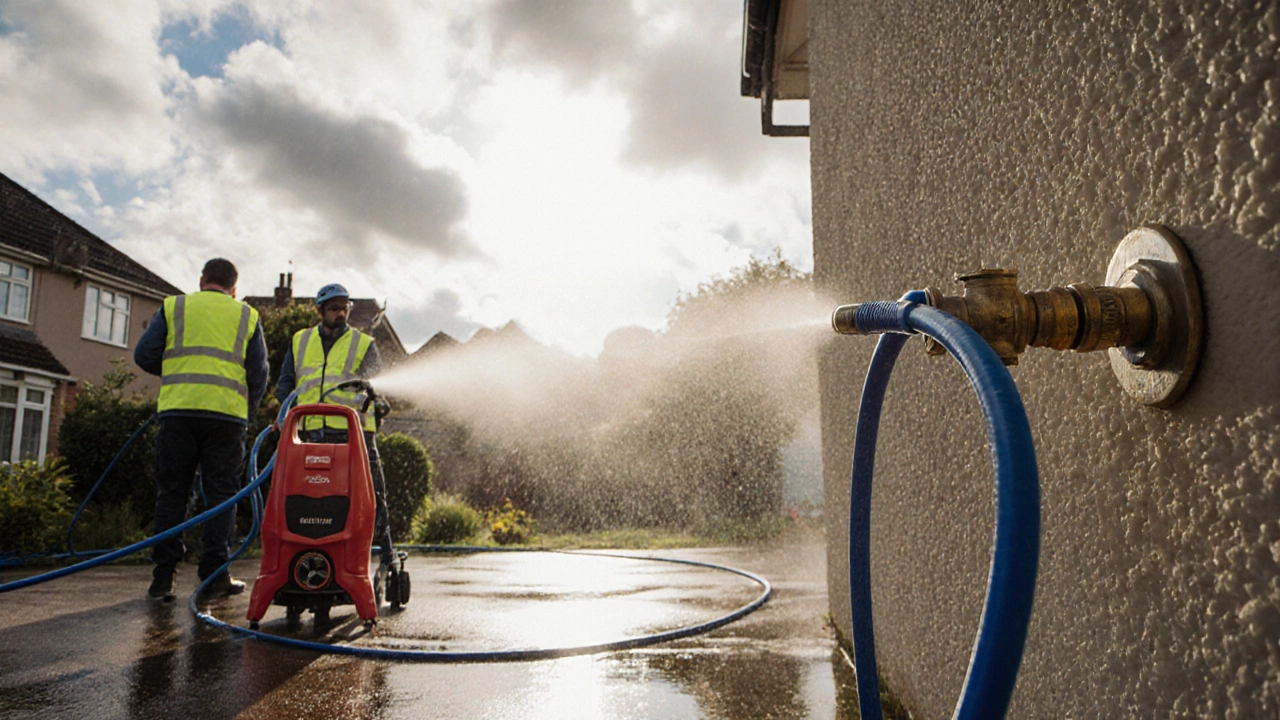Reduce Water Pressure Wash: Keep Surfaces Safe and Clean
When working with reduce water pressure wash, the practice of lowering the force of a pressure washer to protect delicate surfaces while still removing grime. Also known as low pressure washing, it helps prevent paint chips, etching, and water waste. Another key player is pressure washer PSI, the measurement of how much force the machine delivers; choosing the right PSI is essential for a gentle clean.
Lowering the pressure doesn’t mean you sacrifice cleaning power. Reduce water pressure wash works best when you pair the right nozzle types, such as a 25-degree fan or a 0-degree turbo for spot cleaning, with the appropriate PSI setting. The nozzle determines spray pattern, which directly influences how much impact each droplet has on the surface. For example, a wide‑angle nozzle spreads the force, making it ideal for painted siding, while a narrow‑angle nozzle concentrates pressure for stubborn oil stains on concrete. Understanding these connections—pressure, nozzle, surface—lets you avoid costly damage.
Why Surface Type and Water Conservation Matter
Every material reacts differently to pressure. Wood, brick, stone, and vinyl each have a threshold where the water force can cause erosion or discoloration. By reducing pressure, you preserve the integrity of these surface types and extend their lifespan. At the same time, lower pressure means less water consumption, supporting water conservation goals without sacrificing cleaning results. Many homeowners report up to a 30% water saving when they adjust PSI from 3000 to 1500 for routine cleaning tasks.
Safety gear is another piece of the puzzle. Gloves, goggles, and proper footwear shield you from recoil and splash-back, especially when you experiment with different nozzles and PSI levels. A quick safety check before you start—verify that the hose is secure, the spray wand is attached correctly, and the area is clear—prevents accidents and ensures a smooth workflow.
Putting these ideas together creates a clear workflow: start by evaluating the surface, select a nozzle that matches the material, set the pressure washer to the lowest effective PSI, and wear the right protective equipment. This logical chain—surface → nozzle → PSI → safety—makes the reduce water pressure wash process both efficient and low‑risk. Below you’ll find a curated set of articles that walk you through each step, from choosing the right PSI for driveways to prepping your home before a pressure wash, so you can put these tips into action right away.

Do Pressure Washers Use Public Water? Facts About Water Sources and Conservation
Learn where pressure washers get their water, UK regulations, eco‑friendly alternatives, and how to ensure contractors use sustainable water sources.
Read More